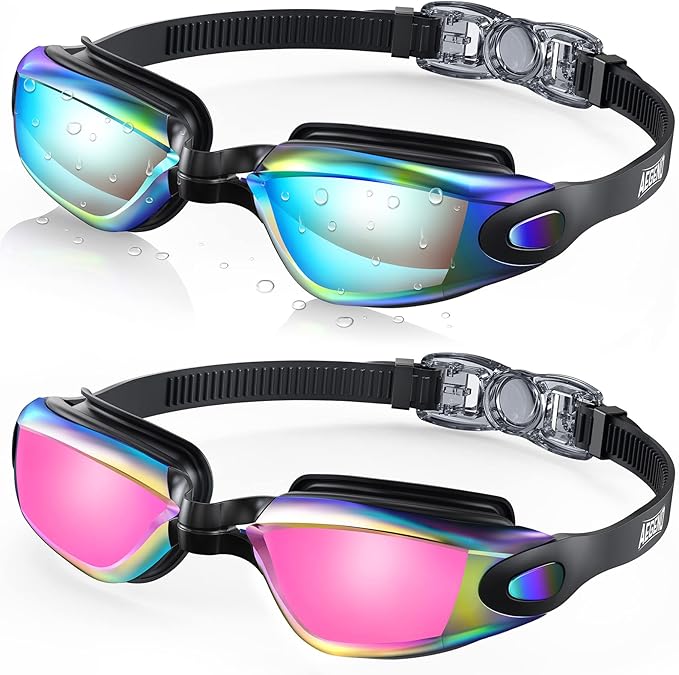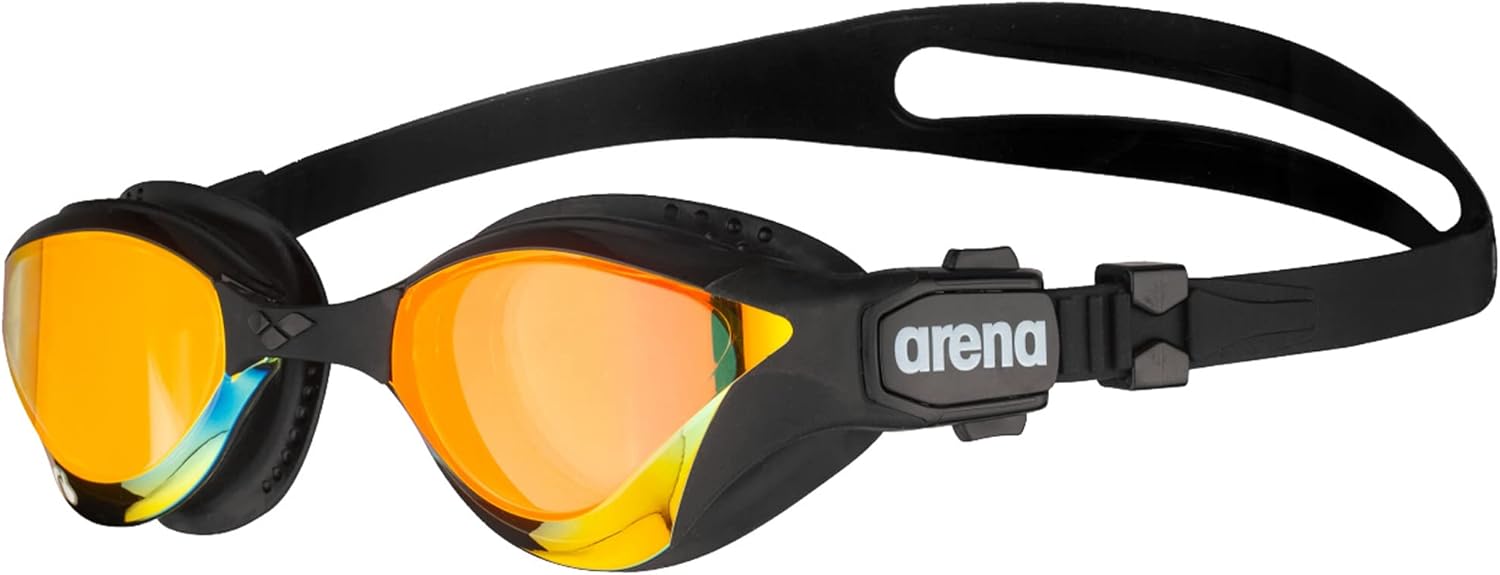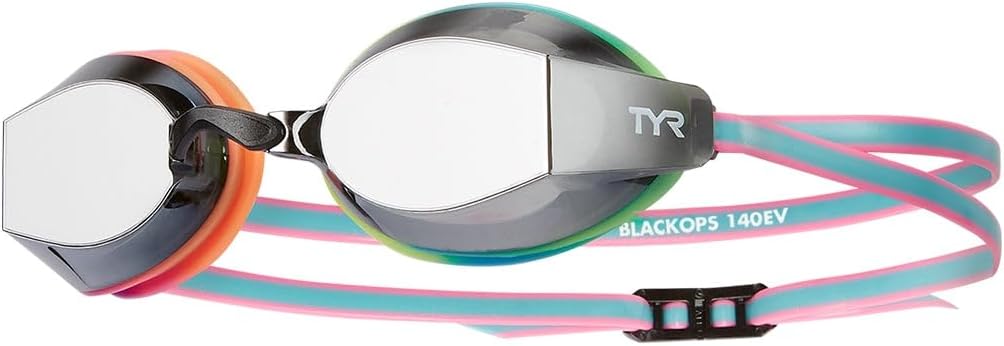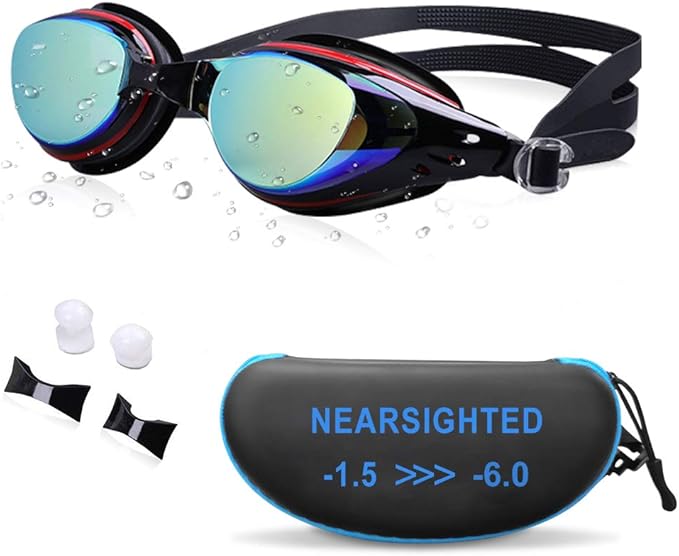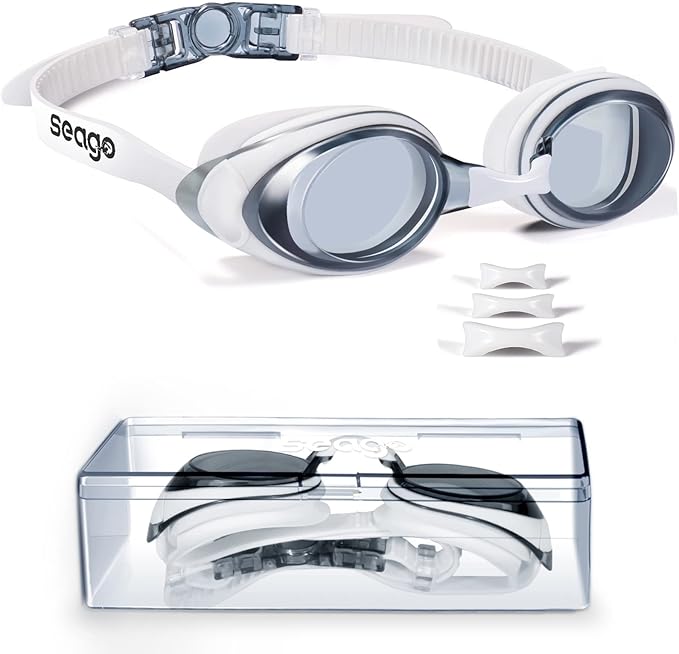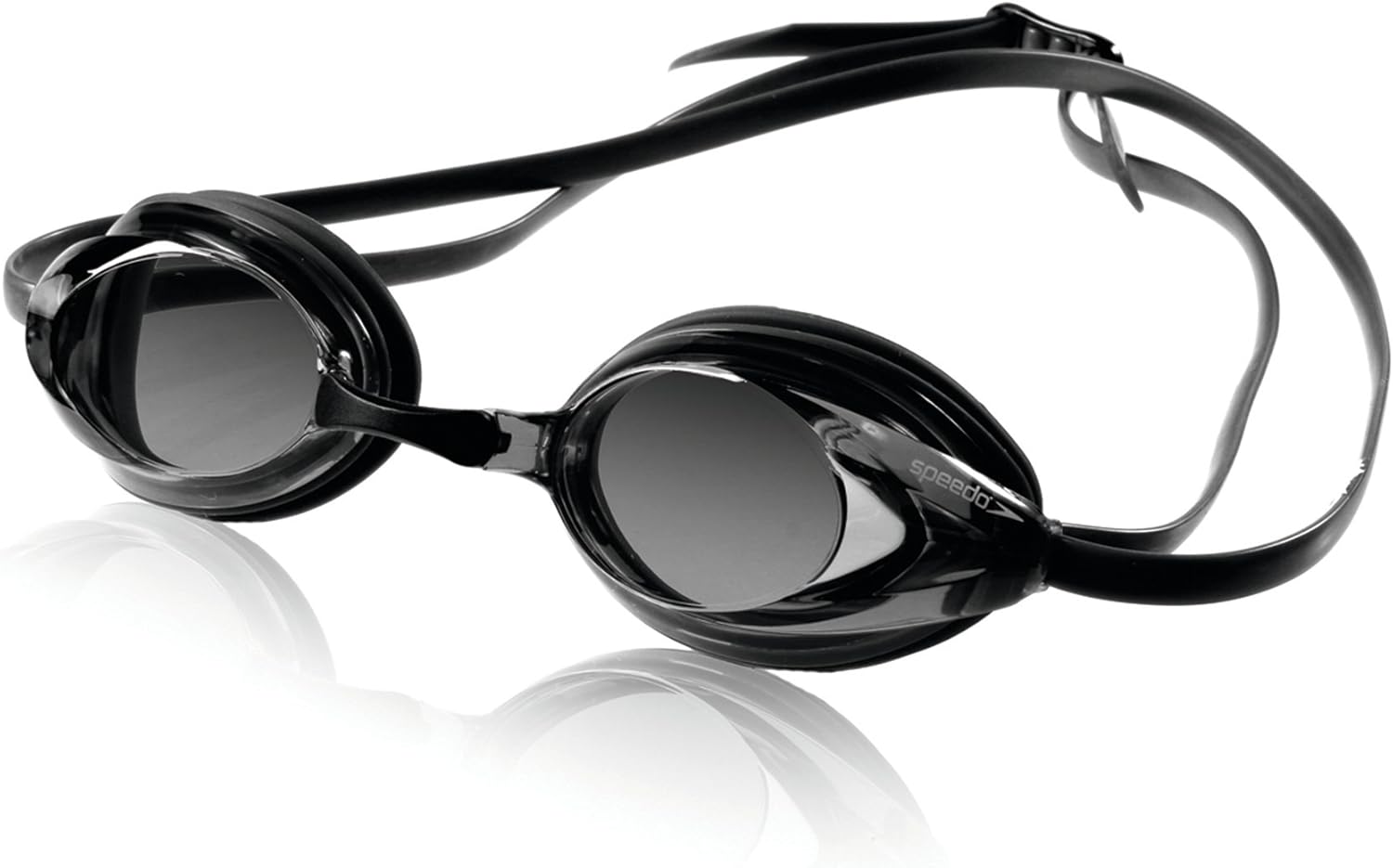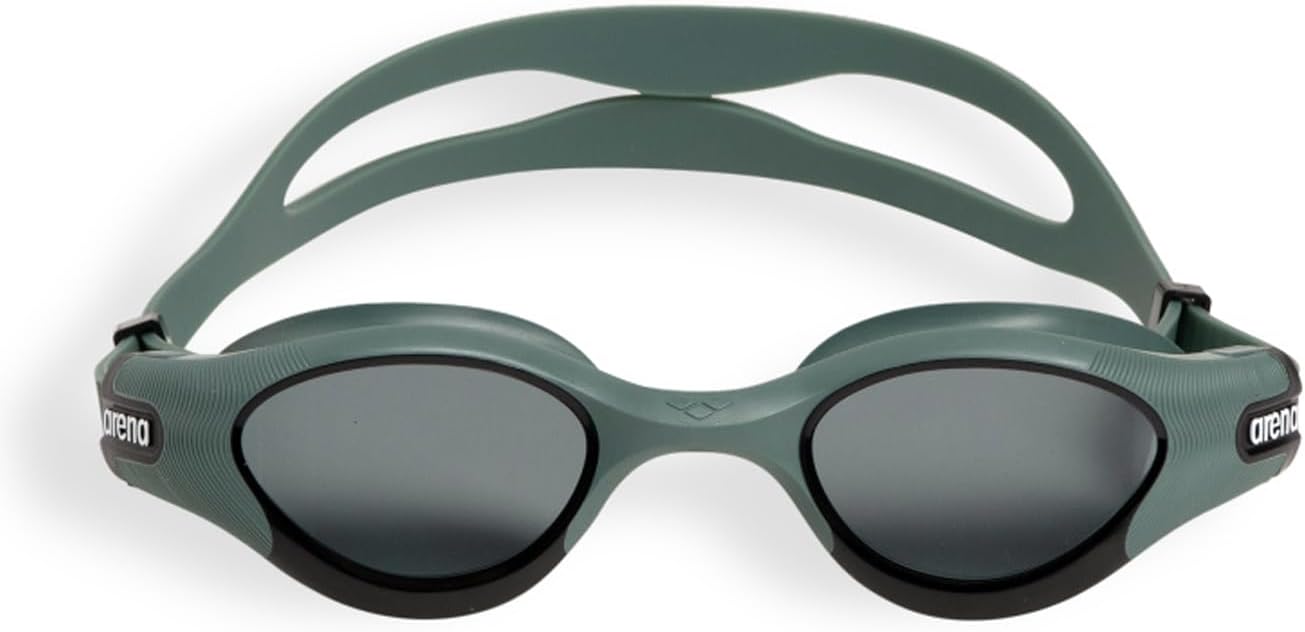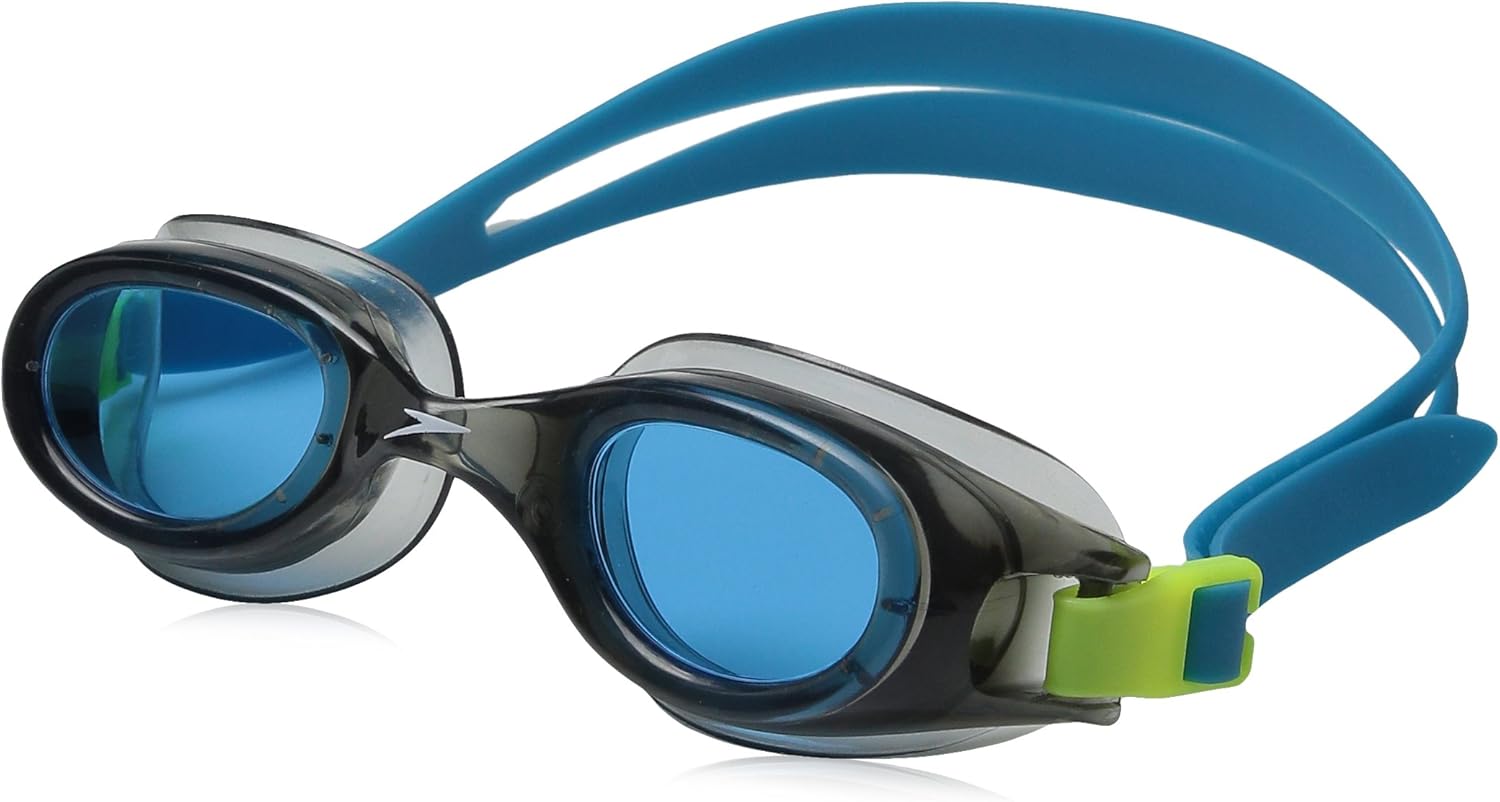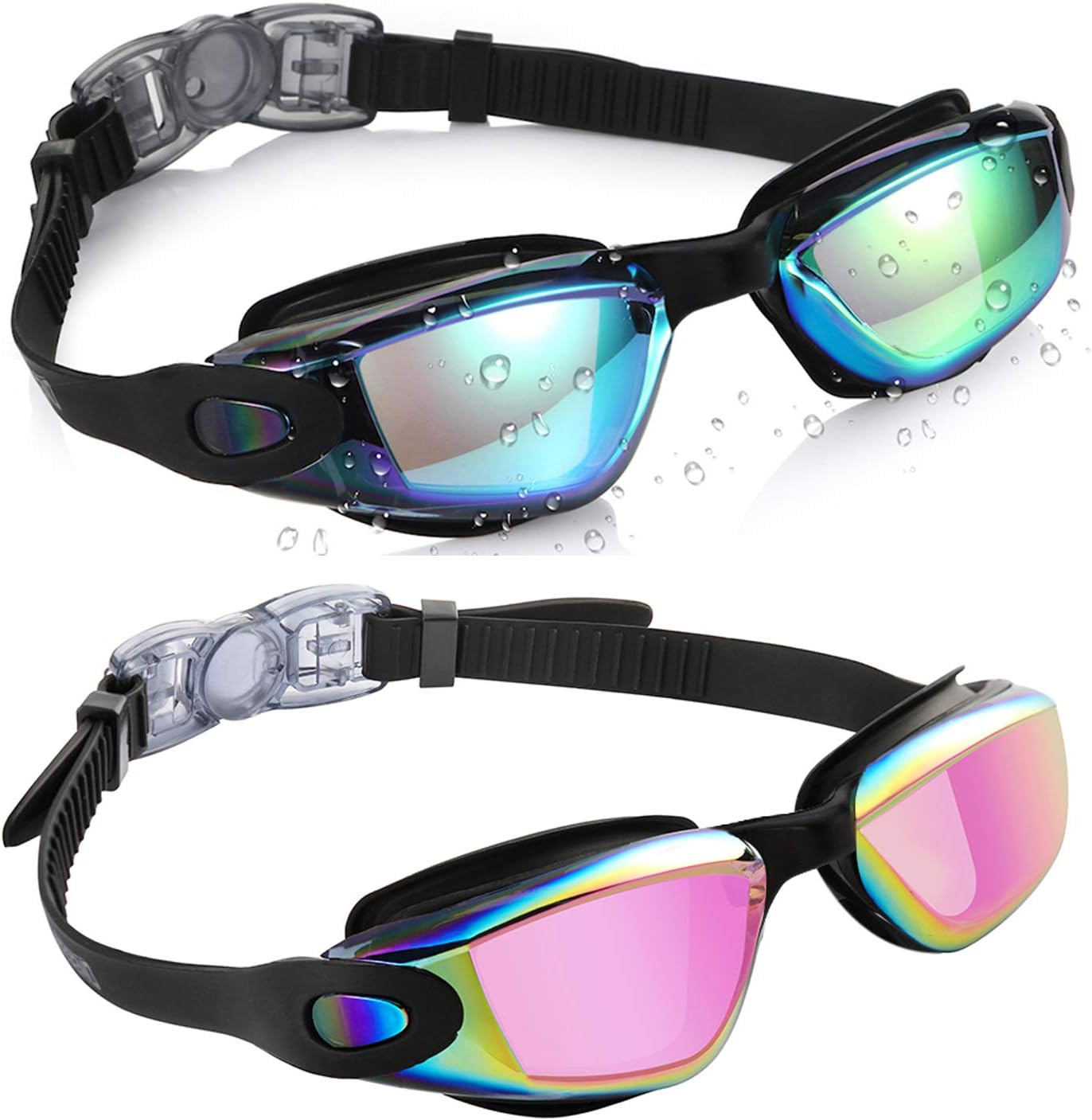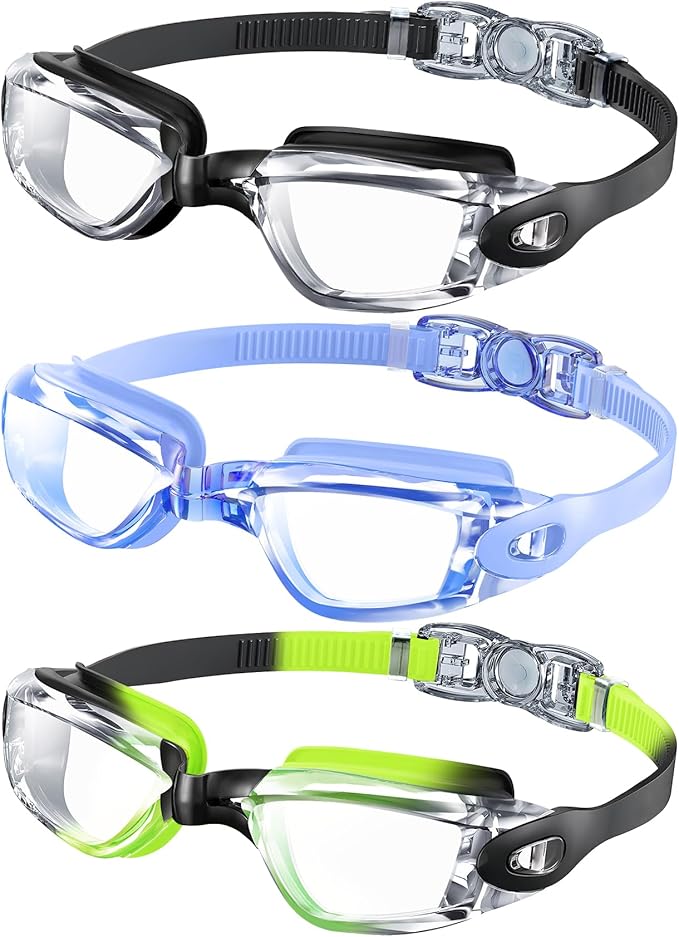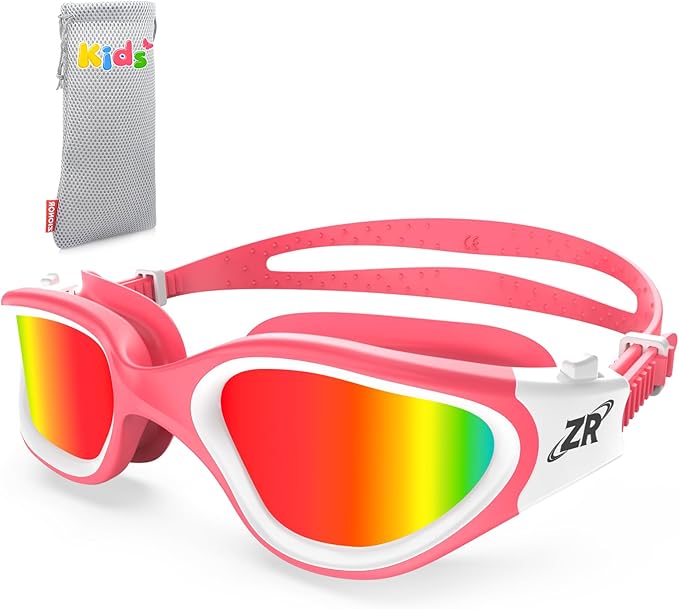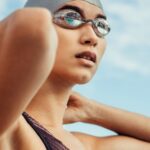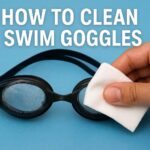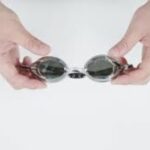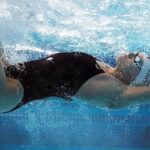How To Choose Swimming Goggles – The Only Guide You’ll Ever Need
You’d think picking swimming goggles would be easy. Two cups, a strap, and you’re off to the pool. Yet anyone who has tried three different pairs and still ended up with leaky eyes, fogged-up lenses, or red marks that scream “tightest strap in town” knows the struggle is real.
So, how to choose swimming goggles without wasting money or patience? Let’s break it down clearly and properly, one step at a time.
How To Choose Swimming Goggles
People often want the fastest route to a decision, so here’s the short version:
- Fit first: Suction-test the goggles on your eyes without the strap. If they hold for a few seconds, you have the right seal shape.
- Choose the right lens: Clear for indoor pools, mirrored or polarized for sunny days, photochromic for changing light.
- Check the UV rating: If you swim outdoors, make sure it blocks UVA and UVB rays.
- Size and comfort matter: Adjustable nose bridges, soft gaskets, and correct strap tension prevent leaks and pressure marks.
- Consider your use: Racing, fitness, open-water, or casual fun; each benefits from a slightly different goggle style.
Now, let’s walk through everything else you actually need to know about how to choose swimming goggles so your next pair is a keeper.
|
|
|
|
Why Fit Matters More Than Anything
The Suction Test That Saves You Money
Most leaks come from poor fit, not loose straps. Press the goggles gently against your eyes without using the strap. If they stay put for a few seconds from suction alone, the gasket shape suits your face.
If they fall off instantly, try a different model or adjust the nose bridge. Speedo and other brands even allow you to change the nose piece on Speedo goggles for a better fit.
Strap Tension: Loosen Before You Tighten
A common mistake is cranking the strap too tight, which flattens the gaskets and causes leaks. The seal should do the sealing, not the strap. For Speedo models, you can easily learn how to loosen Speedo goggles using their side clips or rear-pull systems. A gentle fit prevents those deep marks around your eyes after swimming.
Lens Types: Seeing Clearly in Every Situation
Choosing the right lens is like picking sunglasses for different weather:
- Clear lenses: Best for indoor pools or low-light conditions.
- Mirrored lenses: Cut brightness and reduce glare on sunny days.
- Polarized lenses: Perfect for open-water swimmers because they block surface glare.
- Photochromic lenses: Adapt to changing light, ideal for triathlons or outdoor training.
If you have deep-set eyes or wear glasses, you can find best goggles for deep set eyes or swimming goggles over eyeglasses options that match your needs.
UV Protection: Your Eyes Will Thank You
Studies confirm that prolonged exposure to sunlight increases the risk of eye damage. Quality swimming goggles come with UV400 or similar protection, blocking both UVA and UVB rays. For outdoor swimmers, this is non-negotiable.
RELARED: Best diving rings for swimming pools
Fog-Free Swimming: Keeping Vision Clear
Every swimmer has faced fogged-up lenses halfway through a session. Here’s what works:
- Rinse goggles with fresh water after every swim.
- Avoid touching the inner lens to preserve the anti-fog coating.
- Use recommended sprays if factory coatings wear out.
This simple routine covers how to clean swim goggles properly so they last longer.
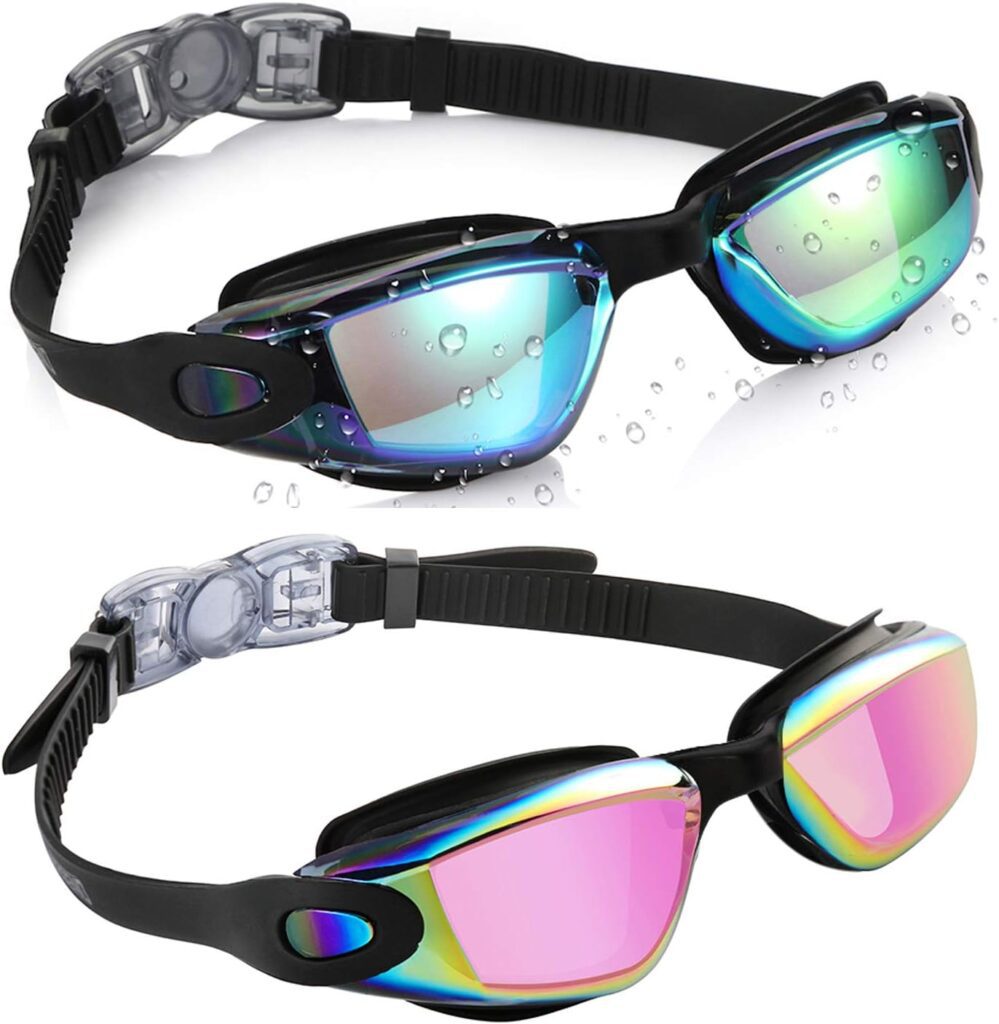
Sizing and Comfort: Stop Guessing
A swim goggle size chart from brands like Speedo or TYR can guide you. Look for:
- Interchangeable nose bridges for a better fit.
- Soft silicone gaskets for comfort and fewer pressure marks.
- Low-profile designs for racing and minimal drag.
For swimmers with swimming goggles that fit over glasses needs, check models labeled “optical” or prescription-ready.
Recreational vs. Racing vs. Open Water
Pool Training
Comfort is king. Wide seals, clear or lightly tinted lenses, and adjustable straps suit long, easy swims.
Racing
Competitive swimmers often choose Swedish-style goggles: low profile, minimal drag, and customizable fit.
Open Water and Triathlon
Polarized or photochromic lenses with wide peripheral vision work best here. A secure strap system prevents loss in waves.
Smart Goggles: A New Era
Some goggles now include heads-up displays showing lap counts and split times. Great for data lovers, but fit and lens choice still come first.
How to Choose Swimming Goggles for Beginners
For first-time swimmers, comfort and ease of use matter most. Beginners often struggle with leaks and fogging, so start with goggles that have soft silicone gaskets and an adjustable nose bridge. These features prevent water from getting in and reduce tight pressure marks around the eyes.
Stick to clear or lightly tinted lenses so vision stays natural in indoor pools. Avoid ultra-low-profile racing goggles at first: they can feel uncomfortable until you’re used to wearing goggles properly.
Before buying, do the suction test: place the goggles on your eyes without the strap and see if they stay on for a few seconds. If they do, you have the right shape for your face.
Prescription Swimming Goggles
|
|
|
|
If you wear glasses, regular goggles won’t solve the vision problem. Prescription swimming goggles come in two main types:
- Diopter lenses: These have pre-made strengths, similar to reading glasses. They work well for common prescriptions like –2.0 or –3.5.
- Custom prescription goggles: Made specifically for your eyes, offering the sharpest vision underwater.
Some swimmers try swimming goggles that fit over glasses, but they often leak or feel bulky. Prescription goggles are designed to seal properly and stay comfortable during laps, which is why they’re a better investment if you swim regularly.
How to Choose Swimming Goggles for Kids
|
|
|
|
Kids care about comfort first and looks second—but parents need to think about safety and durability too. For children:
- Pick soft, wide gaskets so they don’t pinch.
- Make sure the lenses offer UV protection if swimming outdoors.
- Look for easy-to-adjust straps so kids (or parents) can tighten or loosen them quickly without a fight.
- Bright colors help parents spot kids easily in busy pools.
Some brands make youth-specific models sized for smaller faces. Always let kids try the goggles in shallow water before lessons or competitions so they get used to wearing them.
Best Swimming Goggles
“Best” depends on the swimmer’s needs:
- For racing: Low-profile Swedish goggles or competition-specific models reduce drag and stay in place at high speeds.
- For open water: Polarized or photochromic lenses cut glare and improve visibility in lakes, oceans, or sunny conditions.
- For training: Comfort-focused goggles with anti-fog coatings and wider seals work best for long sessions.
- For kids: Soft, UV-protected goggles with simple adjustment systems keep them happy in the water.
Brands like Speedo, TYR, Aqua Sphere, and Arena consistently top expert lists for best swim goggles because they balance comfort, performance, and durability.
How to Choose Swimming Goggles for Swimming Pool
Indoor pools usually have consistent lighting and no glare, so clear or light blue lenses are ideal. They let in plenty of light for better visibility. For outdoor pools, mirrored or smoke lenses reduce brightness on sunny days.
Anti-fog coatings are especially important because pool water tends to be warm, and warm air trapped inside goggles can quickly fog lenses. Always rinse with fresh water after swimming: this extends the life of the anti-fog layer and keeps your goggles clearer for longer.
Caring for Your Goggles
To make them last:
- Rinse after every swim with fresh water.
- Air-dry away from direct sunlight.
- Store in a protective case to prevent scratches.
Following these steps prevents most complaints and extends lifespan.
FAQs on How to Choose Swimming Goggles
How To Wear Swimming Goggles – A Complete Expert Guide
Adjust the strap evenly, position it at the crown of your head, and press the lenses lightly for a snug but comfortable seal.
How to Change Nose Piece on Speedo Goggles
Most Speedo goggles have snap-on bridges in different sizes. Swap them gently until you find the one that stops leaks without adding pressure.
Best Swim Goggles Recommendations
While fit varies by face shape, brands like Speedo, TYR, and Arena dominate competitive swimming, while Aqua Sphere offers great options for open water.
Troubleshooting: Common Problems and Fixes
- Leaking at corners: Try a wider nose bridge or softer gasket design.
- Red marks after swimming: Loosen the strap or switch to a larger frame size.
- Persistent fogging: Clean lenses properly and refresh the anti-fog coating.
A Simple Buying Checklist Before You Pay
- Perform the suction test.
- Check lens type for your environment.
- Verify UV protection if swimming outdoors.
- Look for adjustable nose pieces.
- Confirm sizing using a swim goggle size chart.
- Test comfort before removing tags so you can exchange if needed.
The Bottom Line on How to Choose Swimming Goggles
Learning how to choose swimming goggles saves time, money, and frustration. Fit first, lens choice second, comfort third: follow this order, and you’ll rarely go wrong. With the right care, your goggles will last longer, protect your eyes, and make swimming a pleasure instead of a chore.

